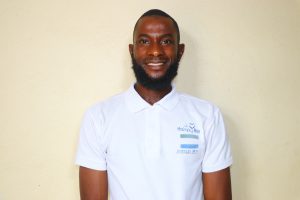The 123 community members of Gbanah Bana Community take an average of thirty-five minutes to collect water from the local swamp, their primary water source. It is not an ideal place to collect water, but without an alternative, people have no choice.
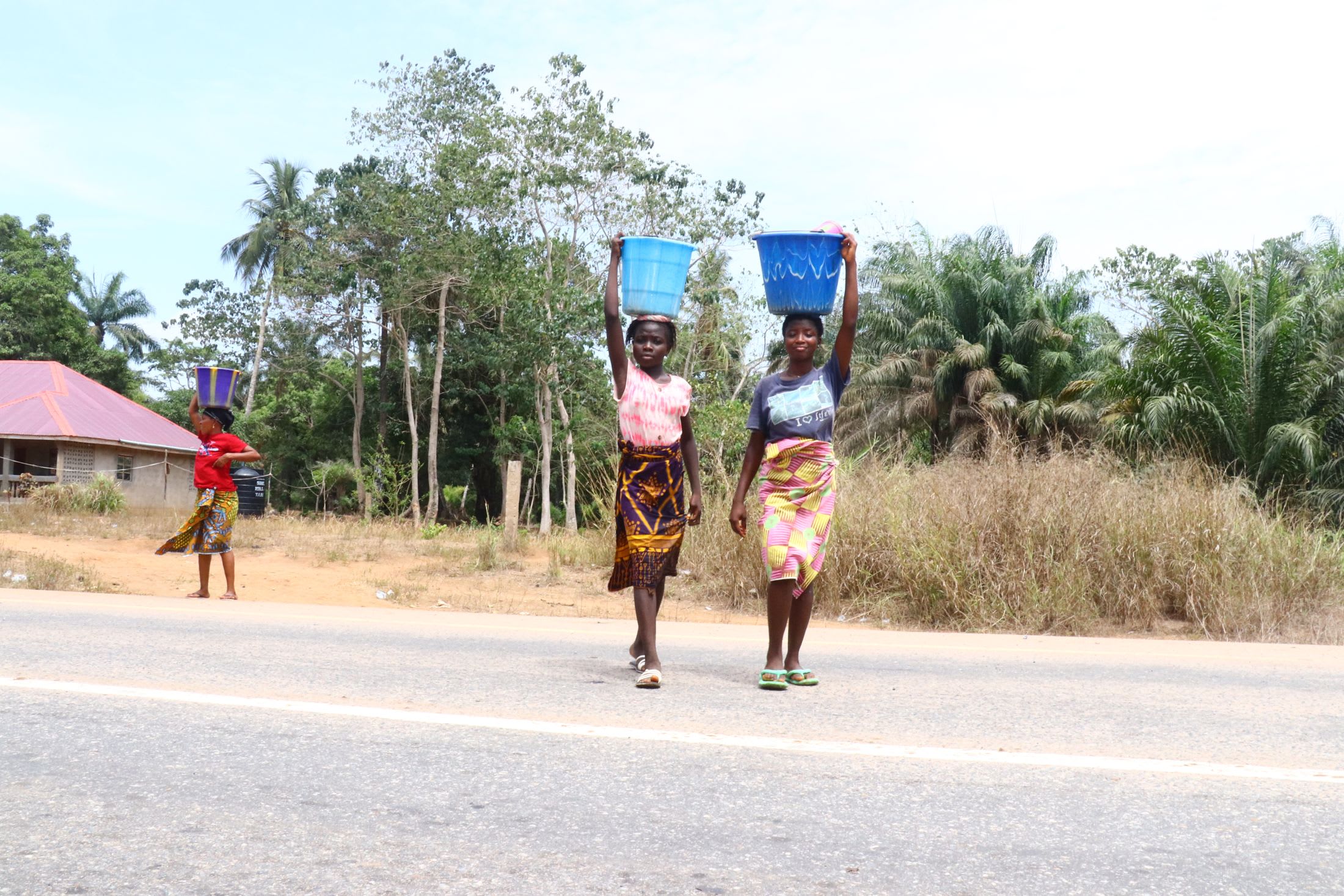
"The water source is located across the busy Port Loko Road, and this causes the water users to be exposed to road accidents, especially the children," shared Field Officer Alie Kamara.
To get to the swamp, most people must cross a busy road and climb a daunting hill, both of which become especially difficult when they are carrying full water containers that weigh an average of forty pounds.

Sixteen-year-old Isatu is familiar with the risk as she must make the tiring, difficult journey every day.
"The place where I usually fetch water is located far away, and it is surface water, so the method of collecting this water causes delay. I must kneel and then use a cup to bail [and] put [it] into the rubber bucket. I must cross Port Loko Road, and sometimes vehicles pass at high speed, and this causes me to wait until the bikes/vehicles pass. Walking long distances to access water and climbing the hill cause me [to] take too long to fetch water," said Isatu.
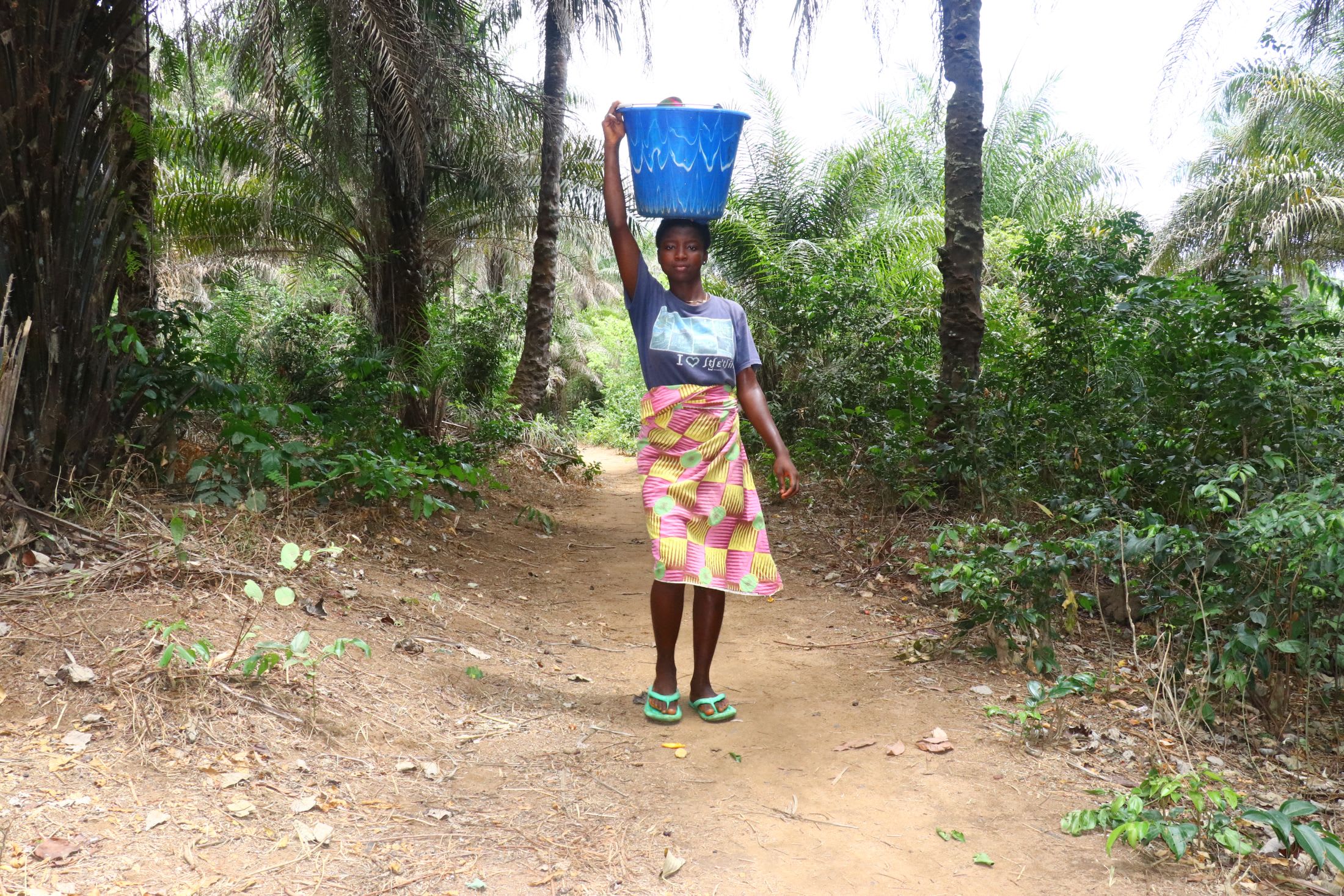
Isatu walking to the swamp.
Isatu is not only worn out from her daily water responsibilities but also constantly worried that she may be injured, which would result in her missing out on her education.
"I feel bad when my parents send me to fetch water. Walking long distances, climbing the hill, and crossing the Port Loko road where vehicles or bikes pass at high speed cause me delays," shared Isatu.
"As a child, I am worried about safety always. I do not want to get hurt or sustain an injury that will result in me not going to school. This will hinder my schooling," said Isatu.
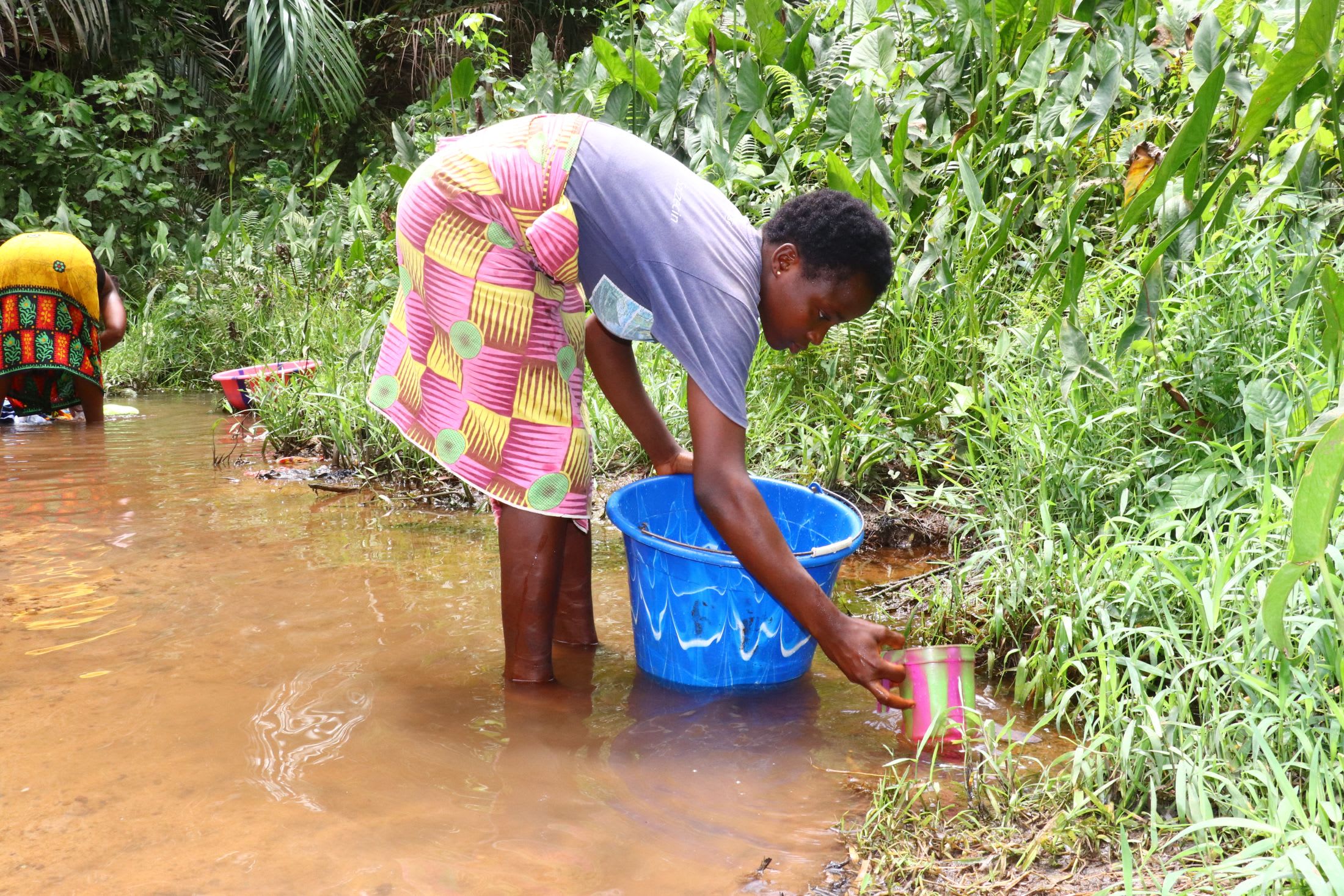
Isatu collecting water.
"Fetching water impacts my time at school. I will be late to go to school and then I get punishment. I get poor grades due to a lack of studying my school notes or not having enough time for my schooling. This will have a bad impact on my schooling," Isatu continued.
Isatu has aspirations, but until she has water security, those dreams will be difficult to attain.
"I want to attain higher education and join the police force, so that I can help my parents," she said.
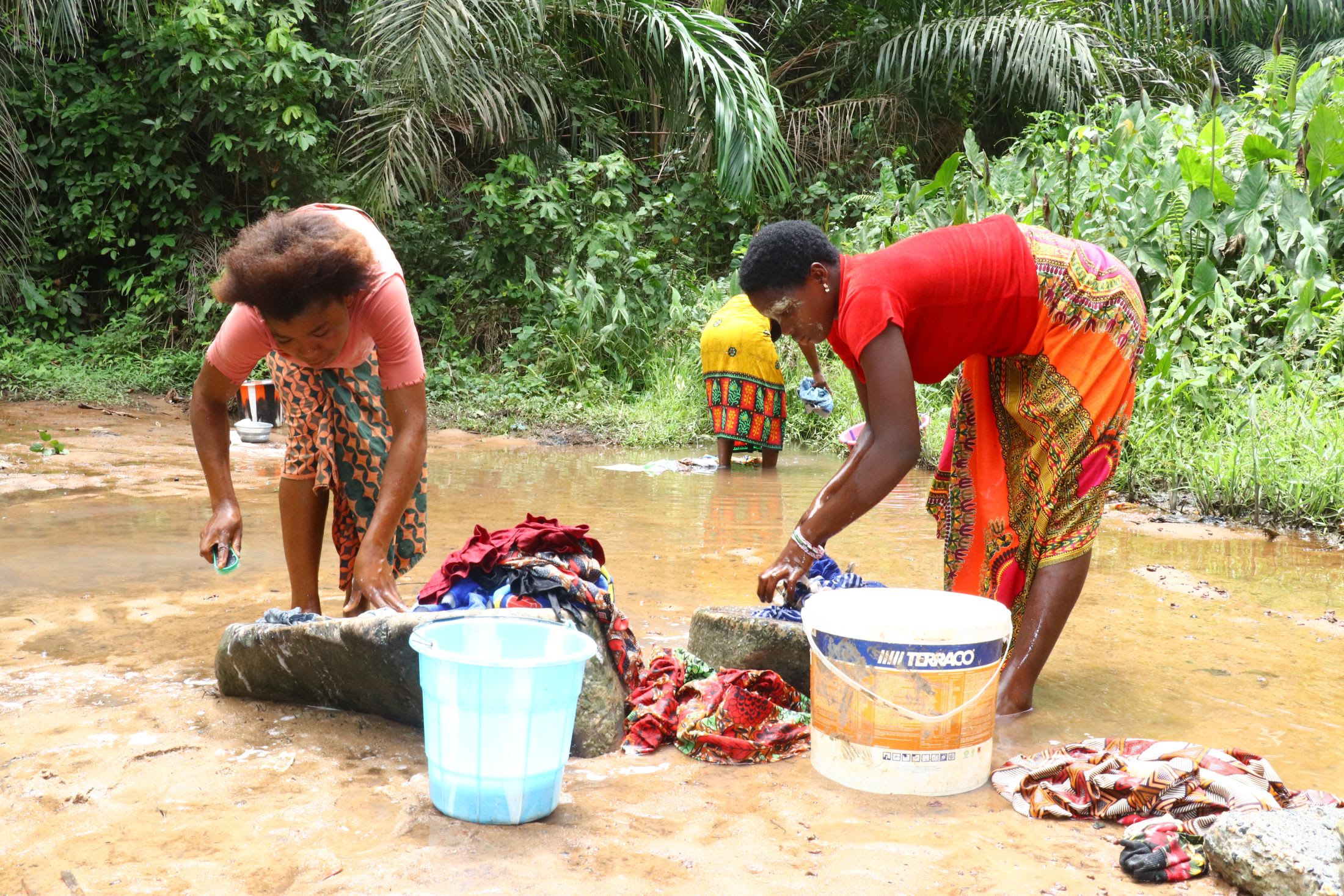
The Gbaneh Bana community is developing and growing in population, and the water demand continues to rise. For them to have a successful, bright future, they need a reliable, safe, and easily accessible water source. This will afford children the time to be educated and adults the time to improve their livelihoods.
Steps Toward a Solution
Our technical experts worked with the local community to identify the most effective solution to their water crisis. They decided to drill a borehole well, construct a platform for the well, and attach a hand pump.
Well
Abundant water often lies just beneath our feet. Aquifers—natural underground rivers—flow through layers of sediment and rock, offering a constant supply of safe water. A borehole well is drilled deep into the earth to access this naturally filtered and protected water. We penetrate meters, sometimes even hundreds of meters, of soil, silt, rock, and more to reach the water underground. Once found, we construct a platform for the well and attach a hand pump. The community gains a safe, enclosed water source capable of providing approximately five gallons of water per minute. Learn more here!
Community Education & Ownership
Hygiene and sanitation training are integral to our water projects. Training is tailored to each community's specific needs and includes key topics such as proper water handling, improved hygiene practices, disease transmission prevention, and care of the new water point. Safe water and improved hygiene habits foster a healthier future for everyone in the community. Encouraged and supported by the guidance of our team, a water user committee representative of the community's diverse members assumes responsibility for maintaining the water point, often gathering fees to ensure its upkeep.

 Borehole Well and Hand Pump
Borehole Well and Hand Pump
 Rehabilitation Project
Rehabilitation Project








